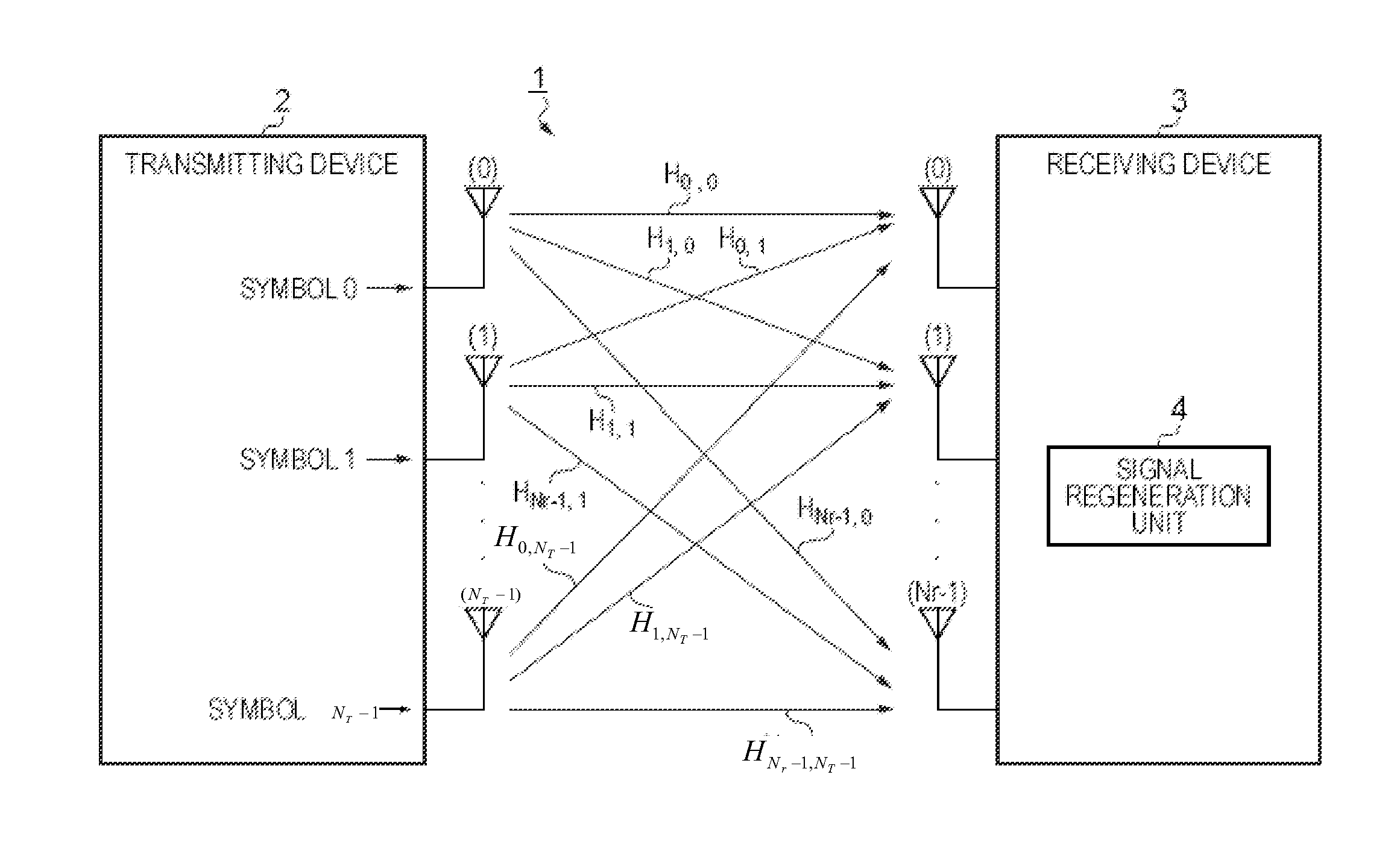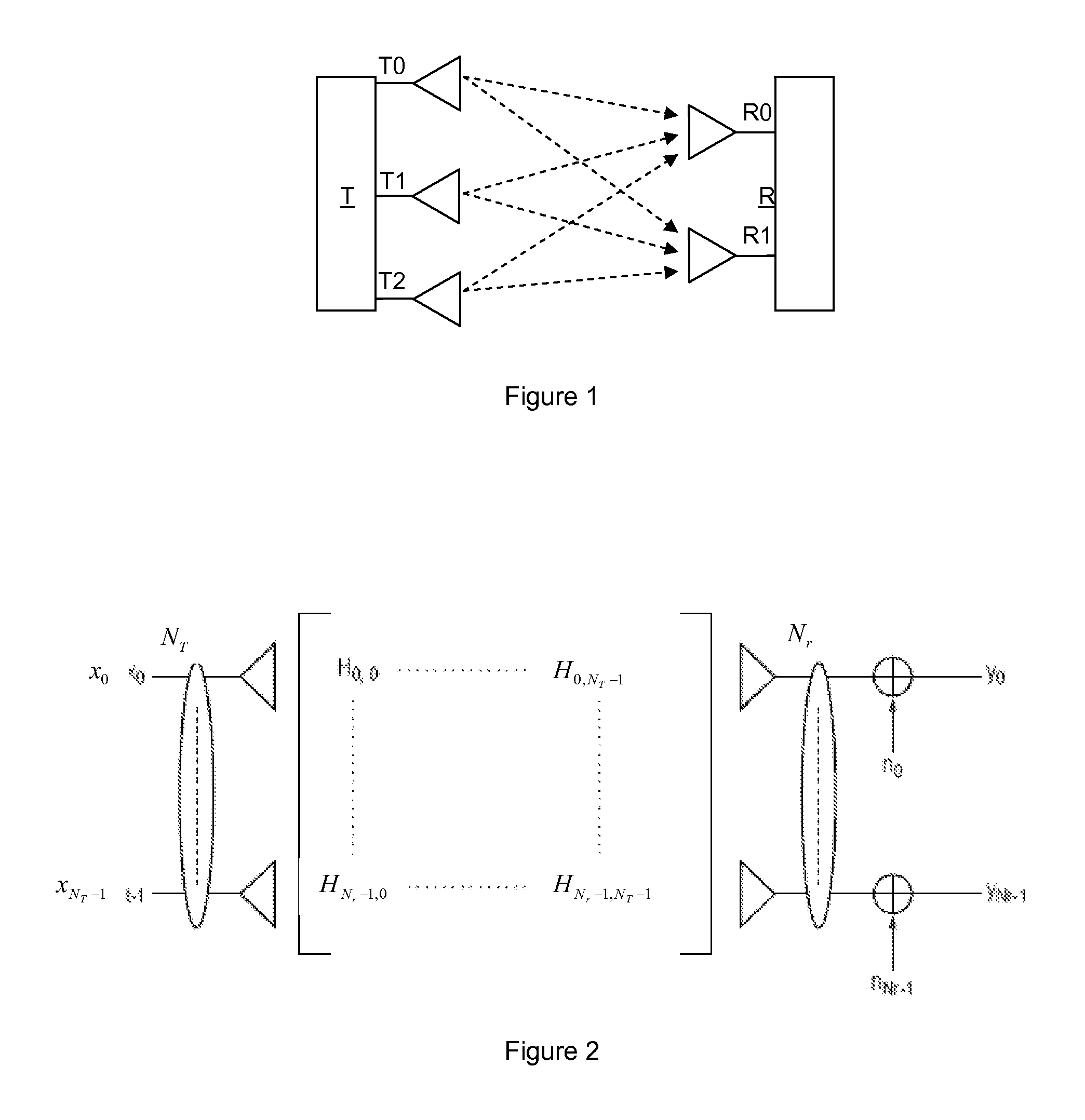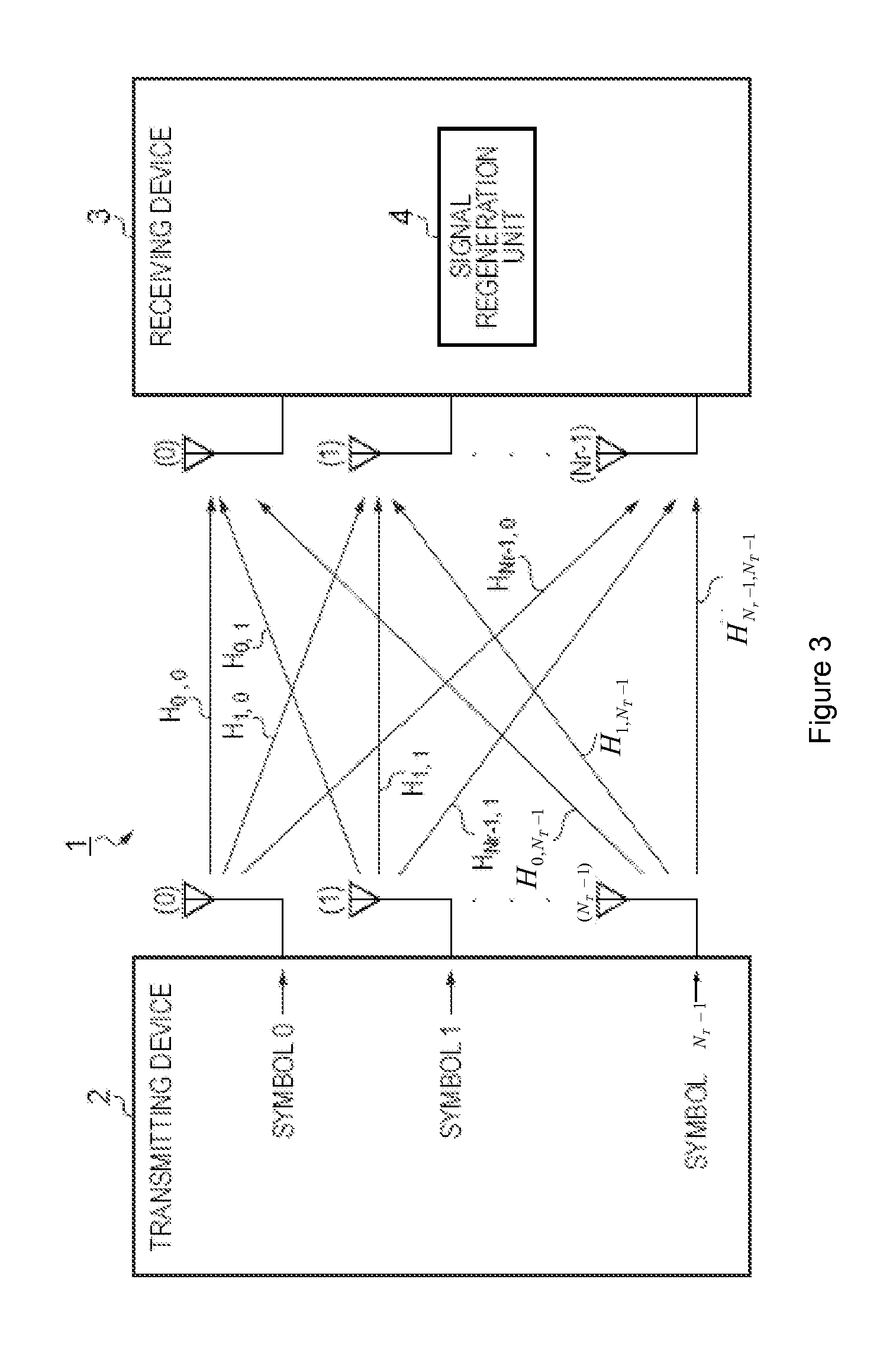Channel state feedback for multi-cell MIMO
- Summary
- Abstract
- Description
- Claims
- Application Information
AI Technical Summary
Benefits of technology
Problems solved by technology
Method used
Image
Examples
Embodiment Construction
[0116]In the above explanation, the term “channel” (as in MIMO channel) has been used to describe the response of the entire radio link between a transmitter and a receiver. However, the term “channel” is also used in another sense to denote capacity reserved on the uplink, or downlink, for various purposes. Such channels can be defined at various levels of abstraction within the network. FIG. 8 shows some of the channels defined in LTE at each of a logical level, transport layer level and physical layer level, and the mappings between them. For present purposes, the channels at the physical layer level are of particular interest.
[0117]On the downlink, user data is carried on the Physical Downlink Shared Channel (PDSCH). There are various control channels on the downlink, which carry signaling for various purposes. In particular the Physical Downlink Control Channel, PDCCH, is used to carry scheduling information from base stations (called eNodeBs in LTE) to individual UEs.
[0118]Mea...
PUM
 Login to View More
Login to View More Abstract
Description
Claims
Application Information
 Login to View More
Login to View More - R&D
- Intellectual Property
- Life Sciences
- Materials
- Tech Scout
- Unparalleled Data Quality
- Higher Quality Content
- 60% Fewer Hallucinations
Browse by: Latest US Patents, China's latest patents, Technical Efficacy Thesaurus, Application Domain, Technology Topic, Popular Technical Reports.
© 2025 PatSnap. All rights reserved.Legal|Privacy policy|Modern Slavery Act Transparency Statement|Sitemap|About US| Contact US: help@patsnap.com



